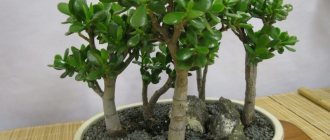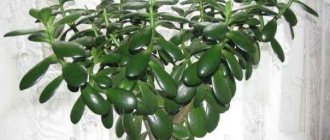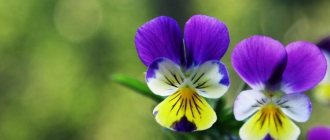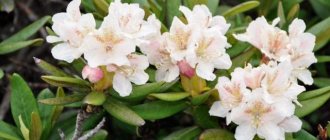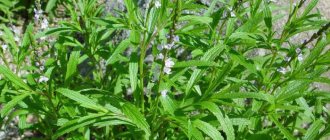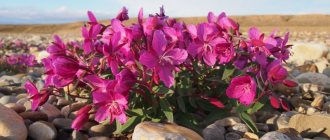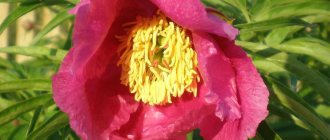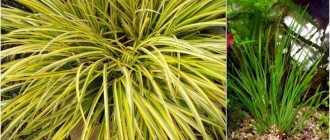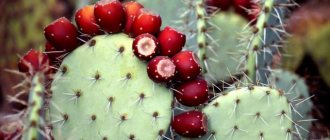This is a perennial herbaceous plant of the Crassulaceae family. Other names for Kalanchoe are bryophyllum, indoor ginseng, Goethe flower, tree of life, home healer, surgeon without a knife, etc. Some of its varieties grow well at home, delighting with beautiful flowers and providing healing assistance. The plant has a bacterial, anti-inflammatory, wound-healing and hemostatic effect. Its juice has a detrimental effect on polio and influenza viruses. Kalanchoe medicinal is successfully used in dentistry, surgery, gynecology, gastroenterology and dermatology.
Features of the plant
Succulents have many varieties and hybrid species. So you may come across both a woody plant and an ampel plant in the store. But the green friend will always have thick and juicy leaves of a pleasant green color. But their shape can be round, triangular, wavy, with small teeth and even even. There are species with edges, a waxy coating or speckled.
Chemical composition
Kalanchoe is a plant rich in various beneficial substances. Its leaves contain complex carbohydrates, polysaccharides, which are the main sources of energy, and flavonoids, which are very similar in composition to human hormones. They contain a lot of organic acids (citric, malic, oxalic, acetic) that maintain the acid-base balance in the body.
The plant also contains vitamins C and P, tannins, cardiac glycosides and a large number of minerals, including calcium, magnesium, aluminum, iron, copper, silicon, manganese. Each of these substances is essential for the normal functioning of the body.
Home care
Kalanchoe will not require much effort from you to grow. It can go without water for a long time and does not require maintaining a certain temperature or humidity. In addition, it is a medicinal plant. So it will help in treatment at any time.
Location and lighting
Succulents need a lot of sun. It is only advisable to catch the morning and evening sun rays, and during the daytime either remove them from the windowsill altogether or shade them. You can place a flowerpot with a flower on the east or west window. In winter you can safely place it on a south-facing window sill. If you want Kalanchoe to bloom in the cold season, you will have to supplement it with light.
Temperature
The most favorable environment for a fleshy sprout is +17-19°C. But the flower can withstand a lot of coolness. The main thing is that the thermometer reading does not fall below +5-6 degrees.
It is desirable that the daytime temperature differs from the night temperature by several degrees. This is necessary for the formation of buds and better flowering.
But it is advisable to protect your pet from the heat. If the room is more than 20 degrees, the Kalanchoe will begin to absorb more liquid, and this can lead to rotting of the roots.
Watering
You should remember the main rule - it is better to underfill than to overfill Kalanchoe. The fleshy stems accumulate moisture, so the plant can survive without water for some time. And excess liquid can lead to the death of your green friend.
In summer, water when the substrate is one third dry, and in winter by 2/3, that is, almost completely. The water should be settled and cool. Pour in enough liquid to make the soil moist but not wet. In case of accidental overflow, be sure to drain the excess from the pan.
You need to water so that moisture does not fall on the leaves.
Air humidity
Kalanchoe, which does not like water, also reacts unfavorably to high humidity. The air in the room must be dry, otherwise it will rot and die. Only occasionally should you wash off the dust from the leaves.
The soil
For Kalanchoe, a purchased substrate for cacti or succulents is suitable. You can take universal soil, enriching it with expanded clay or perlite. You can collect the soil mixture yourself. You will need to take:
- 30% turf;
- 30% leaf soil;
- 30% river sand (coarse);
- 10% vermiculite.
Feeding and fertilizers
Kalanchoe does not need frequent feeding. It is enough to apply mineral fertilizer for succulents once a month. During flowering, you can fertilize it once a week, but in small portions. In winter, fertilizing should be stopped altogether. Make sure that there is some nitrogen in the composition, otherwise the bush may rot.
Transfer
A pot for Kalanchoe needs to be deep and wide, since the root system is not inferior in growth to the above-ground part. It is best to take a clay pot. The bottom of the container should be lined a quarter of the height with expanded clay or clay shards for better drainage. The diameter of the flowerpot should be 2-3 cm larger than the previous one.
The bush will have to be replanted every year in the spring, immediately after flowering. After removing the plant from an old pot with a small amount of soil, inspect the roots and get rid of any dried or rotten parts. Move to a new place of residence. In this case, the substrate must be identical to the old one. Place the bush so that the root collar is at the level of the soil mixture. And the upper edge of the flowerpot should protrude 2-3 cm above the soil. Add as much soil as needed and water the pet. Sprinkle a layer of pebbles on top. Adaptation to changing living conditions should take place within a week.
If you need to urgently replant a Kalanchoe during flowering, use the transshipment method. To do this, water the bush thoroughly, transfer it along with the earthen lump into another pot, and fill the remaining cavities with fresh soil.
Trimming
For the beauty of the bush, regular pruning and pinching is necessary. This should be done every spring or early summer after the plant has flowered. Particularly elongated shoots should be reduced by half or even two-thirds.
Those that are too bare will look unattractive, so it is better to cut them off to the base and root the top to form a new plant.
Bloom
From mid-October to early March, when daylight is short, Kalanchoe produces many flowers. To get flowering in the warm season, you will need to “deceive” the plant, imitating darkness. To do this, for six weeks, you should hide the flowerpot with a flower in an unlit place every day and keep it there for 14 hours, and keep it in daylight for only 10 hours. In this case, watering should be reduced by half.
For flowers to form en masse, it must be +7 degrees at night, and no more than 16 degrees during the day. Make sure that the thermometer does not drop to +4 degrees or below. This can be fatal for your pet.
Under such conditions, Kalanchoe will bloom in 5-7 weeks. Once the bush blooms, resume normal care. Dried flowers should be removed. This will stimulate the development of new ones.
If you took a pot of Kalanchoe outside for the summer, then return it back to the apartment without waiting for frost. After 3 months it should lose color.
When you bring a bush from the store, do not immediately place it in the sun. First, shade with a piece of fabric. After a few days, begin to remove the cover little by little, gradually increasing the intervals in the light. Otherwise, the plant may drop its flowers, since the store is usually dim, and watering is done quite often.
Making a tincture
Kalanchoe tincture with vodka is not widely used. But to treat some ailments, healers advise resorting to this particular remedy. Sometimes it is recommended to combat inflammation in the oral cavity. But it should be remembered that such treatment is unacceptable for children, since the product contains alcohol.
Preparation
- Kalanchoe leaves are cut into small pieces.
- The raw materials are placed in a half-liter jar, filling half the volume.
- Top the mixture with high-quality vodka to the brim of the jar.
- Leave the product for ten days, remembering to shake it periodically.
- The mixture is then filtered. Store the finished medicine in the refrigerator.
How to use
The tincture is useful for rheumatism, gout, arthritis, radiculitis and many other pathologies of the musculoskeletal system, as well as varicose veins, but only as local therapy. The tincture is taken internally for prostatitis.
- Joint diseases. It is recommended to rub the affected joints with an alcohol tincture of Kalanchoe. This will reduce the severity of inflammation and relieve pain.
- Varicose veins It is recommended to use the tincture for rubbing the feet at the stage of spider veins appearing on the skin. In this case, therapy will be more successful. Rubbing begins near the feet and carefully moves up to the knees. In case of varicose veins, it is prohibited to press on the affected vessels. The duration of treatment can last up to four months.
- Prostatitis. To defeat prostatitis, internal administration of the drug is recommended. Men are prescribed one teaspoon of tincture 20 minutes before meals twice a day. Continue therapy for two weeks and take a break for 14 days. Then they resume the course again.
Kalanchoe tincture with alcohol is strictly contraindicated for people suffering from liver diseases and patients prone to alcoholism. It is better for such individuals to consider treatment with water infusion or juice.
Reproduction
You can get new Kalanchoe plants in different ways:
- cuttings;
- leaves;
- seeds;
- children;
- kidneys;
- offspring.
You should choose a propagation method depending on the type of flower you grow.
Cuttings
You need to choose long shoots of at least 8-12 cm. Cuttings from apical shoots take root best. Rooting can be done in two ways:
- Cut off the cuttings and let them sit for 24 hours to dry. Remove the lower leaves. Moisten the soil in the pot and plant the cuttings in it. After 2-3 weeks it should take root.
- Prepare the cutting as described above. Then lower it into water so that half of the stem is in the liquid. The glass of water should not be in direct sunlight. When the roots appear after 2-3 weeks, you can transplant the sprout to a permanent place.
Leaves
Even a novice gardener can perform this procedure with consistent success. Cut the leaf and plant it in a well-moistened substrate. Cover the top with a glass jar. The roots should emerge within 3-4 days. After this, the plant will quickly grow.
For this purpose, you can even use fallen leaves if they have not dried out. You just need to root them in a glass of water. And after the roots appear, replant.
Seeds
This method should be used in the cool season. Sprinkle the seeds on top of the substrate without digging into the ground, just press lightly. Pour a trickle of water over the top to create a depression. Cover the top with a piece of cloth or glass. Avoid exposure to sunlight.
When the shoots appear, plant them in a box, covering the top with polyethylene. And only when 4-5 leaves are formed on the sprouts, plant them in small separate flowerpots. After a month, pinch off the tops. And then repeat this procedure after another 30 days. New plants should bloom in about a year.
Children
This method works best for pinnate Kalanchoes and Degremonas. It is in these species that babies are formed at the edges of the leaf edges, which have roots. Having matured, they fall off and take root in the soil mixture. All you have to do is wait until they have leaves and plant them in a container for rooting. When they gain strength, transplant them into separate flowerpots.
Axillary buds
Axillary buds appear in some species of Kalanchoe at the very hilum when the old leaf falls off. In appearance they look like small heads of cabbage. When it reaches 1-2 cm in height, trim it carefully and plant it in sandy soil. This will make it easier for the shoot to grow.
Offspring
After the Kalanchoe has finished flowering, pinch the apical shoot. Wait until new offspring appear next to the mother shoot. When they reach a third of the height of the mother bush, plant them in the substrate. Such sprouts take root well and grow quickly.
Morphological description
Kalanchoe pinnate
It can reach a height of up to 2 m, has a strong, fleshy stem, tree-like below. On the stem opposite each other are petioled leaves, slightly pubescent with hairs, having a round shape and a glossy surface. Often, leaf buds are formed in the recesses of the teeth, which are intended for vegetative propagation.
The plant blooms irregularly and not strongly; flowering often occurs in the cold period of the year. The inflorescences are axillary panicles: large bisexual flowers sit on the pedicels. Each Kalanchoe flower is the basis of 4 fruit-boxes, which are surrounded by the remains of a corolla. The seeds are small, oval.
Kalanchoe Degremona
This is a popular variety of the genus, the peculiarity of which is the presence of children located on the edges of the leaves. The babies fall off the leaves very easily and quickly take root. The crop is not tall, up to 50 cm, the stems most often creep, so they need support. The leaves are oblong, pointed, dark green. Flowering occurs in winter - the flowers are bell-shaped, large, pink-violet in color.
Kalanchoe Blossfeld
This is a popular plant with numerous bare, weakly branched stems. The height of the plant reaches up to 30 cm. The leaves are round or ovoid in shape, green or dark green in color. Sometimes there is a red border along the edge of the leaf. It blooms for a long time, from the beginning of winter to the beginning of summer. Flowers of dark red, pink, yellow or orange reach a diameter of up to 1 cm, collected in inflorescences in the shape of brushes.
Diseases and pests
Like any other indoor plants, Kalanchoe can be attacked by parasites.
- Aphid. You can get rid of small dark green insects by treating the bush with potassium soap. Too severely affected areas will have to be removed.
- Shield. Gray plaque should first be treated with an alcohol solution, then brush off the insects. Then repeat the alcohol treatment.
- Rot. If you find brown spots, stop watering for a while and partially replace the earthen ball. Then start watering with fungicides.
- Powdery mildew. White plaque appears due to too high air temperature. You will have to spray the bush with a fungicide solution.
- Gray rot. If you find weeping gray spots, you should partially replace the soil, treat the plant with a fungicide and move it closer to the light.
Care errors
If you care for Kalanchoe incorrectly, certain problems may arise:
- The bush doesn't bloom. This may be a consequence of too much fertilizer or too much daylight.
- The leaves curl. The cause may be thrips or leaf rollers. The bush needs to be treated with insecticides or miticide.
- Brown spots on leaves. Appear from excess ultraviolet radiation. Reduce daylight hours for your pet.
- Black spots on leaf blades. They provoke fungal diseases. The temperature in the room should be increased and the humidity reduced.
- Leaves are falling. Move the flowerpot away from the radiator or other heating source.
- The leaves turn yellow and dry out. Due to improper lighting.
- Withering of a flower after flowering. Urgent feeding or replanting is required.
Folk signs
Kalanchoe is suitable for breeding for energetic and purposeful people. This is the kind of flower that will be conducive to achieving success and conquering new heights.
But for those who suffer from indecision, it would be useful to place a flowerpot with a succulent in their home. This will help you gain confidence in your abilities.
If you have problems in your family life, place a pot of flowers on the windowsill, and your feelings with your spouse will get a second wind. And for unmarried people, the fleshy leaves will help attract a groom.
If you notice that the Kalanchoe has begun to fade, you should know that damage has been caused to you or your home.
Medicinal properties
The juice of the fleshy leaves of Kalanchoe is used for external use both in official medicine and at home. Lotions and compresses made from it can be used in the following cases:
- boils;
- trophic ulcers;
- non-healing wounds;
- cracked nipples;
- sunburn.
For a runny nose, it is recommended to apply drops into the nose of adults and children.
In addition, the plant is able to kill harmful microbes floating in the air. So it wouldn’t hurt to place a pot of succulents in each room.
As you already understand, growing Kalanchoe is not difficult. The flower will not require special care from you. But it will always delight you with its beautiful flowering and beneficial properties.
How to use Kalanchoe
The juice and leaves of the plant are used in different ways.
Kalanchoe for treating colds
To treat a runny nose, a decoction or juice of the leaves is used. Sometimes aloe and onion are added to it. In the latter case, it is very important to maintain the correct proportions.
Note! The therapeutic effect occurs when the nasal mucosa is slightly irritated, which leads to intense sneezing. In this way, a person gets rid of accumulated pathogenic mucus. For this reason, this plant is sometimes called "sneezer".
Before use, it is necessary to check whether a person is allergic to this plant. This is a very important point when using Kalanchoe juice. The plant can unnecessarily irritate the mucous membrane, thereby causing a deterioration in the patient's condition. But, if everything is done correctly and carefully, then a positive result is guaranteed. The mucus will come out of the sinuses, and the person will breathe easier.
Kalanchoe decoction
The uniqueness of the product lies in the fact that Kalanchoe officinalis is suitable for treating people of all ages.
You can get a medicinal decoction from Kalanchoe, for which you will need several leaves. They should be filled with 100 ml of water. Boil this mixture and cool completely. It is very important to use the decoction in small doses.
Plant juice
The easiest way is to simply squeeze the juice out of the leaves by squeezing them between your fingers. If the leaves are dry, they are first crushed and then carefully filtered through a bandage or gauze. You don't need a lot of juice, just 1-2 drops. For children under 2 years old, Kalanchoe juice is diluted with water. Sometimes you can even simply wipe the nasal cavity with a cotton swab dipped in juice.
Juice
Using nasal drops from Kalanchoe and aloe juice is very useful and effective. They are mixed in equal proportions in the amount of 1-2 drops of each plant. This medicine is the most gentle and gives a mild effect.
Important! If there is no allergy to Kalanchoe, the plant juice can be used as a preventative measure. During various epidemics, it is recommended to instill drops into the nose several times a day.
